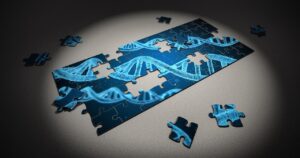Becker Muscular Dystrophy (BMD)
What is Becker muscular dystrophy?
Becker muscular dystrophy (BMD) is a disease that falls into the larger category of muscular dystrophy. It is characterized by the progressive weakness and loss of muscle mass in the skeletal and cardiac muscles. Duchenne muscular dystrophy is similar to this disease, but BMD tends to have a later onset and slower progression.
Males are primarily affected by this disease, and the onset usually occurs between ages five and 15.
What are the symptoms of Becker muscular dystrophy?
The progressive weakness of BMD typically begins in the legs and pelvis, which causes frequent falls and difficulty with walking and muscle skills. The muscles of the heart also weaken, which leads to cardiomyopathy. Other symptoms of BMD are cognitive problems, fatigue, difficulty breathing, a loss of balance and coordination, scoliosis, contractures, and muscle weakness in other parts of the body.
What causes Becker muscular dystrophy?
A mutation in the DMD gene causes this disease. This gene is responsible for the instructions for the protein dystrophin, which helps to stabilize and protect muscle fibers. It also aids in the chemical signaling within cells. Without the functional version of this protein, muscle cells become damaged. This damage causes the cells to weaken and then die.
This disease is inherited in an X-linked recessive pattern, which is why males are primarily affected. As males only have one X chromosome, they need one copy of the mutated gene to be affected by BMD. Females would need both parents to pass down the mutated gene as they have two X chromosomes.
How is Becker muscular dystrophy diagnosed?
Neurological and muscle exams will be performed to diagnose BMD after some of the characteristic symptoms are noticed. Lab tests like CPKs, EMGs, muscle biopsies, and genetic testing may all be used to confirm a diagnosis.
The biggest issue that comes with diagnosing this disease is differentiating between Duchenne and Becker muscular dystrophy, as they are both similar.
What are the treatments for Becker muscular dystrophy?
There is no cure for BMD, and treatment is symptomatic. Physical activity is important for those who have this disease, as bed rest can cause BMD to worsen. Physical and occupational therapy can help to strengthen muscles and complete daily tasks. Speech therapy may help if one experiences a difficulty with swallowing. If one has scoliosis and contractures, then surgery may be an option.
Monitoring for orthopedic and cardiac complications should occur so that early treatment is possible.
Where can I find out more about Becker muscular dystrophy?
Becker Muscular Dystrophy Articles


EDG-5506 Shows Benefits for Becker Muscular Dystrophy, Study Data Shows

Clinical Trial of Vamorolone Receives Orphan Grant Funding


Doctors Listened and Duchenne Muscular Dystrophy Patients Benefited

New Phase 1 Study for Becker Muscular Dystrophy Treatment

COVID-19 Advice for Patients with Becker or Duchenne Muscular Dystrophy







